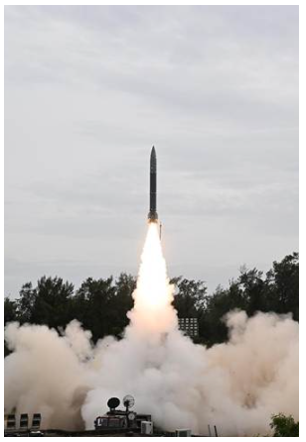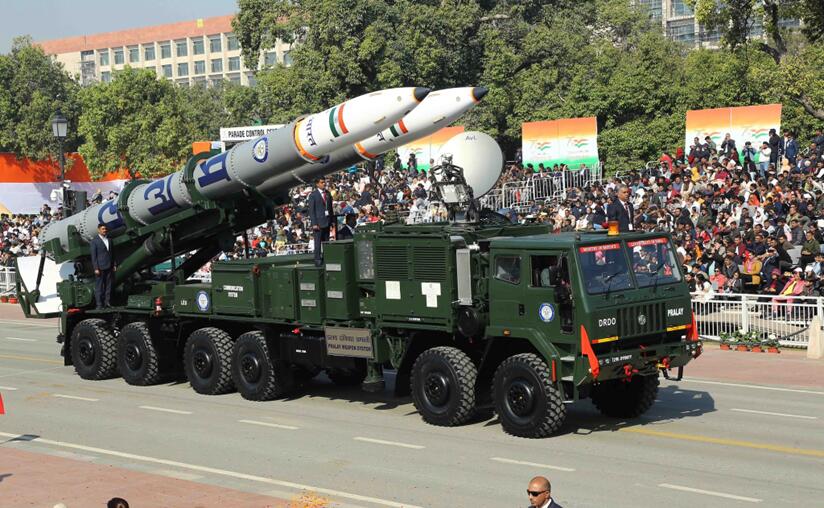Syllabus:
GS3: Achievements of Indians in science & technology; indigenization of technology and developing new technology.
Context:
Recently, the Defence Research & Development Organisation (DRDO) conducted two consecutive successful flight-tests of the Pralay missile from Dr APJ Abdul Kalam Island off the coast of Odisha.
More on the News
- The flight tests were carried out as part of User Evaluation Trials to validate the maximum and minimum range capability of the missile system.
- The missiles precisely followed the intended trajectory and reached the target point with pinpoint accuracy, meeting all the test objectives.
- All subsystems performed as per expectations, which were verified using test data captured by various tracking sensors deployed by Integrated Test Range (ITR), including instruments deployed on the ship positioned near the designated impact point.
- Pralay is a proud symbol of Atmanirbhar Bharat (self-reliant India.)
Pralay Missile System
- Pralay is an indigenously developed solid propellant quasi-ballistic missile employing state-of-the-art guidance and navigation to ensure high precision.
- The missile is capable of carrying multiple types of warheads against various targets.
- It is a surface-to-surface missile, meaning it is launched from the ground and hits a ground target. It is not designed to shoot down planes or enemy missiles.
- Development: The system has been developed by Research Centre Imarat in collaboration with other DRDO labs, Bharat Dynamics Limited & Bharat Electronics Limited and many other industries and MSMEs.
- Range: Pralay is like a smart, powerful arrow that can fly between 150 to 500 kilometres and hit its target with precision.
- Unlike traditional ballistic missiles that fly in a high arc and are easier to track, Pralay follows a quasi-ballistic path which means it flies at a lower height and can change its path mid-air.
- This makes it much harder for the enemy to detect and destroy. Think of it like a clever cricketer who suddenly changes his shot and confuses the fielder.
- Pralay carries powerful conventional (non-nuclear) explosives, weighing between 350 to 700 kilograms.
- These are strong enough to destroy enemy command centres, radar posts, airfields and other military sites.
- The missile reaches a terminal speed of Mach 6.1, making it extremely difficult to intercept.
- It runs on solid fuel so that it can be launched quickly during emergencies. It is also mobile, as it can be launched from a special 8-wheeled military vehicle called a Tatra transporter launcher, built by BEML.
- The newer variants also use advanced 12×12 Ashok Leyland high mobility vehicles with twin-launcher systems.
Significance of the Pralay Missile

- Deterring Pakistan: Pralay gives India a powerful conventional strike option deep inside Pakistan, avoiding nuclear escalation. It can hit key targets and is hard to intercept due to its unpredictable flight.
- Countering China: China has deployed many missiles at the LAC, but Pralay challenges this edge. It can match missiles like the DF-12 and strike key targets in Tibet, while its evasive flight makes it hard for China’s HQ-9 defenses to stop. Pralay gives India a surprise strike power in any border standoff.
- A New Missile Force for India: India plans to set up an Integrated Rocket Force for conventional missiles, with Pralay joining Nirbhay, BrahMos and Pinaka. Separate from the nuclear command, it boosts non-nuclear deterrence and reduces risk during tensions. Pralay’s precision and cost-effectiveness make it a perfect fit.
- Strategic Procurement and Deployment: The Defence Ministry has cleared major Pralay missile orders, 120 for the Air Force in December 2022 and a full regiment for the Army in Sept 2023. Deployed along the LAC and LoC, Pralay boosts India’s tactical edge and signals rising military strength.

